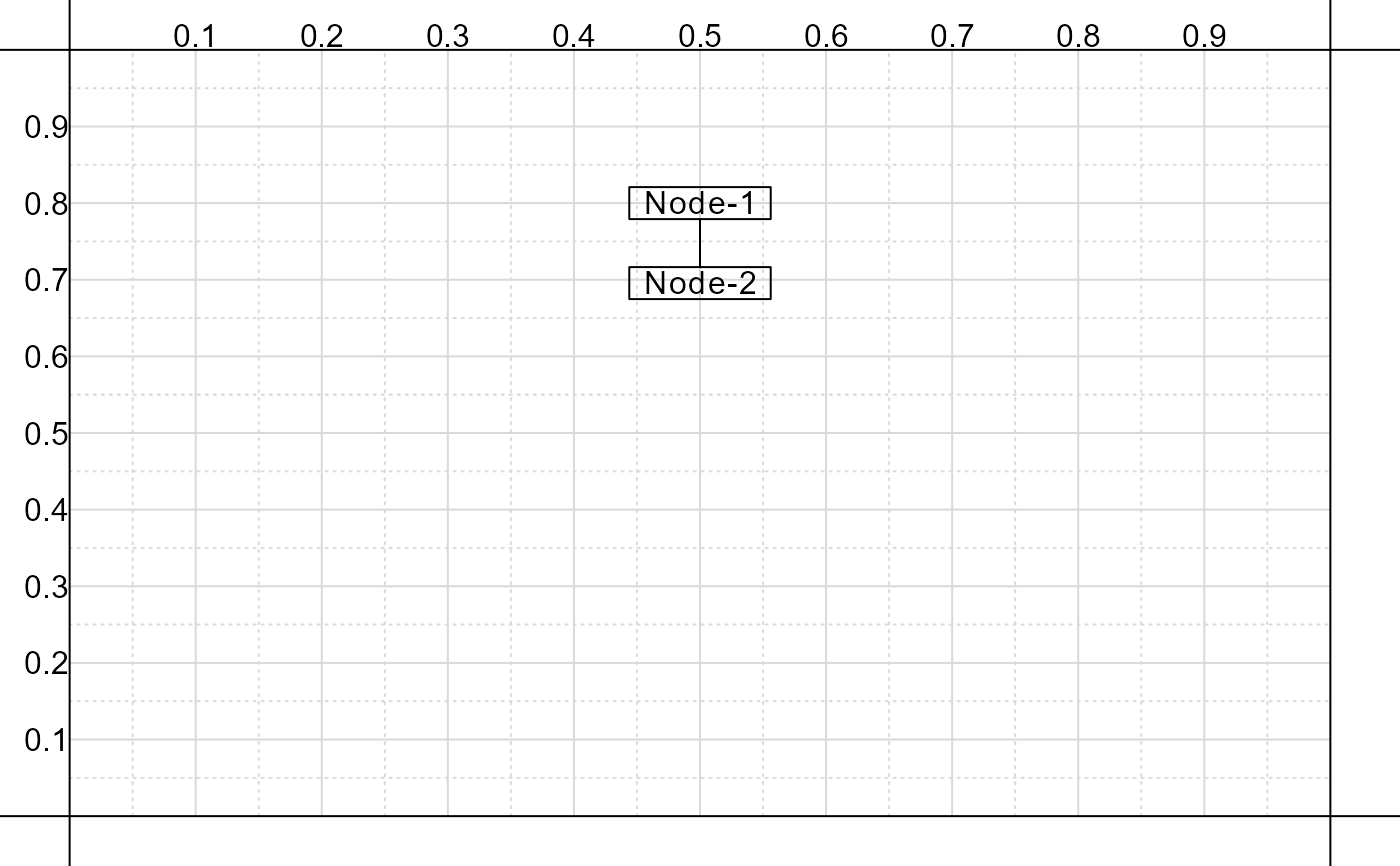Add Node to List
pd_node.RdAdds specifications to draw a new node to an existing list that can then be passed to the [pathdiagrams::pd_draw_nodes] function.
pd_node(
lst,
node,
xy = NULL,
wh = NULL,
string = "",
shape = "rectangle",
from = NULL,
to = NULL,
args.polygon = NULL,
args.text = NULL,
args.arrows = NULL,
ignore_asterisk = TRUE
)Arguments
- lst
A list.
- node
A character string, the name of the node (note that the period symbol should not be used when naming nodes).
- xy
A named numeric vector where
xy['x']specifies the x-axis value andxy['y']specifies the y-axis value for the center of the node. Values should range from 0 to 1 (the fraction of the plotting window). If left asNULL, users can use the argumentfromto specify the node position instead.- wh
A named numeric vector where
wh['w']specifies the width andwh['h']specifies the height of the node. Values should range from 0 to 1 (the fraction of the plotting window). Setting values toNAwill result in the function inferring the relevant dimension size from the node's text content.- string
A character string, the text content for the node. Text can be bracketed by one or two asterisks to produce italics or bold text, respectively. Set
ignore_asterisktoFALSEto suppress this behavior.- shape
A character string, either
'rectangle'or'ellipse', indicating the shape of the node to draw.- from
An optional named vector of two values, giving the offset from a specified node for the x and y-axis. Units are relative. Height is relative to a node using one line of text. Width is relative to the referent node (e.g., a value of -2 for the y-axis will place the new node to the left of the referent node based on twice its width). Names for the vector are the referent node, followed by a period, followed by the location on the referent node to use as reference (e.g., 'N01.bottom'). If no referent node is specified uses absolute x and y-axis values instead.
- to
A character vector, where each string indicates the arrows from the current node and where they should connect to. Format is
'<location> - <node>.<location>'where location is either top, topright, right, bottomright, bottom, bottomleft, left, or topleft, and node is the node name to connect to. Users can indicate the type of arrow to draw using'-'(line),'->'(arrow to new node),'<-'(arrow to old node),'<->'(arrows on both ends).- args.polygon
A named list with additional arguments to pass to the [graphics::polygon] function.
- args.text
A named list with additional arguments governing text (
cexfor text size,colfor color, andspacingfor gap between text).- ignore_asterisk
A logical value, if
FALSEsuppresses behavior determining italic/bold text via asterisks.- args.arrow
A named list with additional arguments to pass to the [graphics::arrows] function.
Value
A list with a new element named node.
Examples
pd_base_figure( default = '5 x 5' )
lst_inputs <- list() |>
pd_node( 'N01', c(x = .5, y = .8), string = 'Node-1' ) |>
pd_node( 'N02', string = 'Node-2',
from = c( N01.center = 0, N01.bottom = -1.5 ),
to = 'top - N01.bottom' )
pd_draw_nodes( lst_inputs )
